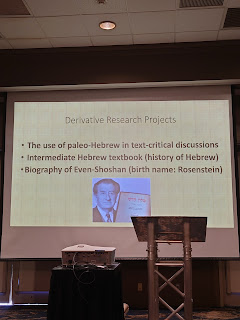This architecture tour was organized by CORE.
Tour Itinerary:
8:00AM // Depart Convention Center
8:00AM – 8:30AM // Travel to Central Library (30 minutes)
8:30AM – 10:30AM // San Diego Central Library Presentation + Tour
10:30 AM – 11:15 AM // Travel to Imperial Beach Library
11:15 AM – 12:15 PM // Imperial Beach Library Presentation + Tour
12:15 PM – 1:00 PM // Lunch at Imperial Beach Library
1:00 PM – 1:15 PM // Travel to San Ysidro Library
1:15 PM – 2:15 PM // San Ysidro Library Presentation + Tour
2:15-3:00pm // Return to Convention Center (30 minutes)
Additional Information about each space:
San Diego Central Library
The nine-story, 497,652 square-foot Central Library opened in 2013 at a cost of $184 million. The library features an outdoor garden courtyard, 350-seat auditorium, three-story domed reading room, an art gallery, an Idea Lab and maker space, a charter school co-located on the 6th and 7th floors, special event rental spaces, and at the top you’ll find an iconic 140-foot dome consisting of eight sails connected on three points. The dome is an ancient architectural form that ties us to the larger history of civic and community architecture and serves as a symbol of enlightenment and democracy. The cutting-edge structural engineering and unique design of the dome are intended to be contemporary and responsive to the San Diego climate. The dome distinguishes this civic resource from the many commercial towers and residential buildings which surround it. The dome anchors the nighttime cityscape with a soft and welcoming glow. The dome is a metaphor. It will never look finished. Like the human spirits being nurtured within, it is in the perpetual act of becoming.
 |
| Magazines and Newspapers are kept on the 3rd floor of the Central Library. |
 |
| The "Historic" magazines are in the open stacks. |
 |
| Daily newspapers are kept on a wire display area near the reference desk at the center of the floor. |
 |
| Miscellaneous newspapers are kept on some shelving at the far end of the floor. |
 |
| Detail of the large "San Diego Central Library" sign from the backside, taken inside the library. |
 |
| This library still has pay phones, which cut an interesting figure against the back drop of the large cement arch in the grand entryway of the library. |
 |
| As a California resident, I got my Padres-themed San Diego library card! |
Imperial Beach Library
The new Imperial Beach Library includes spaces for children, teens, and adults; a marketplace area featuring popular books and media; a computer lab, homework center, and Wi-Fi; a Community room for flexible programming. This project which won an Award of Merit from the ENR California – 2017 Regional Project and also a 2017 Energy Efficiency & Integration Award from the San Diego Chapter of the American Institute of Architects. It is LEED Gold Certified.
This library is part of the San Diego County network of libraries, which is different from the City of San Diego libraries.
 |
| The magazines and newspapers area of the neighborhood branch library. It was finally here I obtained a copy of the San Diego Union Tribune for that day's date. |
 |
| The wave theme permeates the entire architecture of the building, from the view from the entrance... |
 |
| ...to the view from the opposite side of the floor... |
 |
| ...to the mosaic made of recycled porcelain and pottery adorning the front entrance |
San Diego Public Library, San Ysidro Branch
The single-story, 15,000 square-foot San Ysidro Branch Library is designed to encourage interaction and activity. The library features modern amenities, such as children and teen areas, a homework center, maker space/Idea Lab, community rooms, a food serving kitchen, a reading patio, and an outdoor theatre. The Idea Lab focuses on digital textile arts and features a 3D printer, die cut machine, sewing/embroidery machines, serger, button maker, and a heat press. The outdoor reading patio and landscaping complement the library’s architectural design and support the Leadership in Energy and Environmental Design (LEED™) Silver certification.
 |
| Magazine display area of the San Ysidro Branch Library |
 |
| Daily newspaper area. Sign says, "Please do not take the newspapers home" in Spanish and English. |
 |
| More daily newspapers and magazines laid out for browsing. |
 |
| Left side detail of the grand entry way art |
 |
| Right side detail of the grand entryway |
 |
| The grand entryway art is by the de la Torre brothers, who use lenticular prints as seen on the left and ride sides of the entryway, and whose work is also featured in the elevator shaft of the Central Library. |
Bonus: on my last day in San Diego, I also managed to visit the Mission Valley branch library!
 |
| Side view of the Mission Valley branch library |
 |
| Front view of the Mission Valley branch library, with a wavey,metal exterior and a clock tower |
 |
| The pages of the paper are connected with tied strips of twine rather than a staple or interleaved into a newspaper stick |
 |
| View from the upstairs of the library's reading room |


.jpg)
.jpg)
















